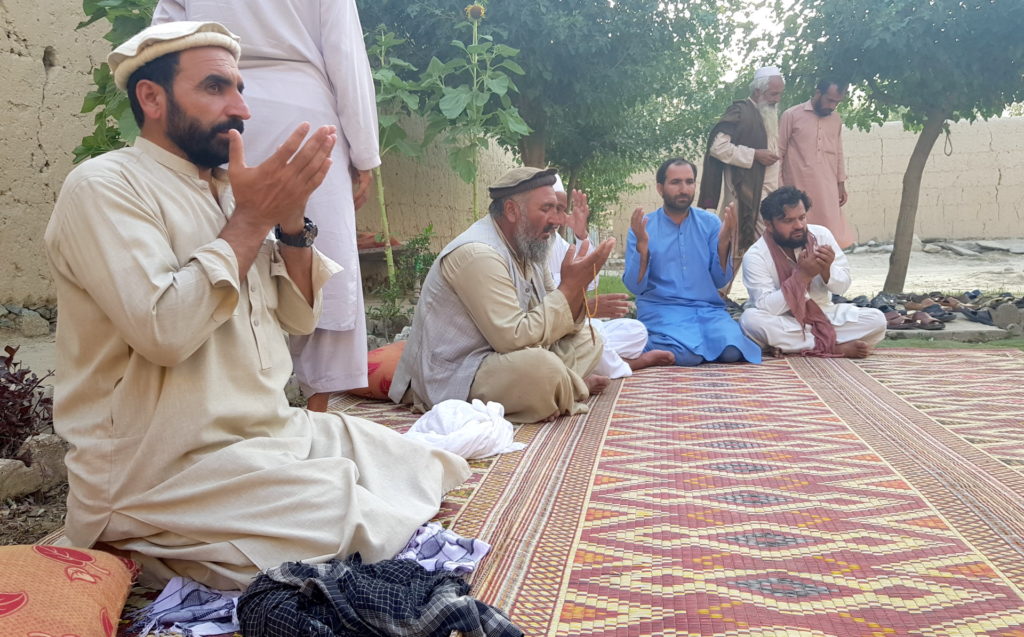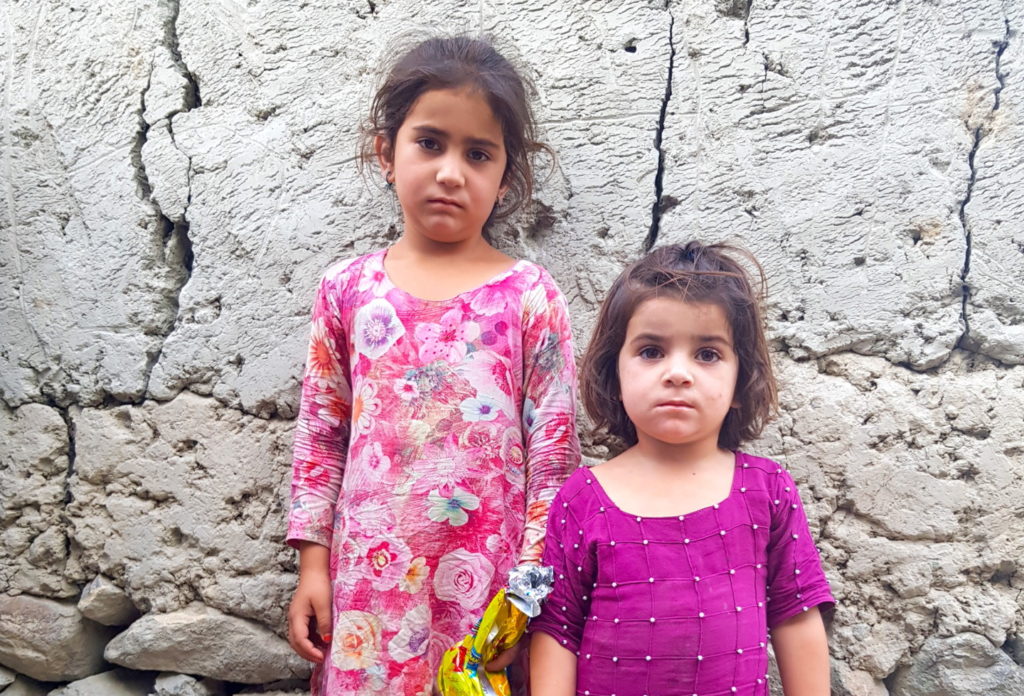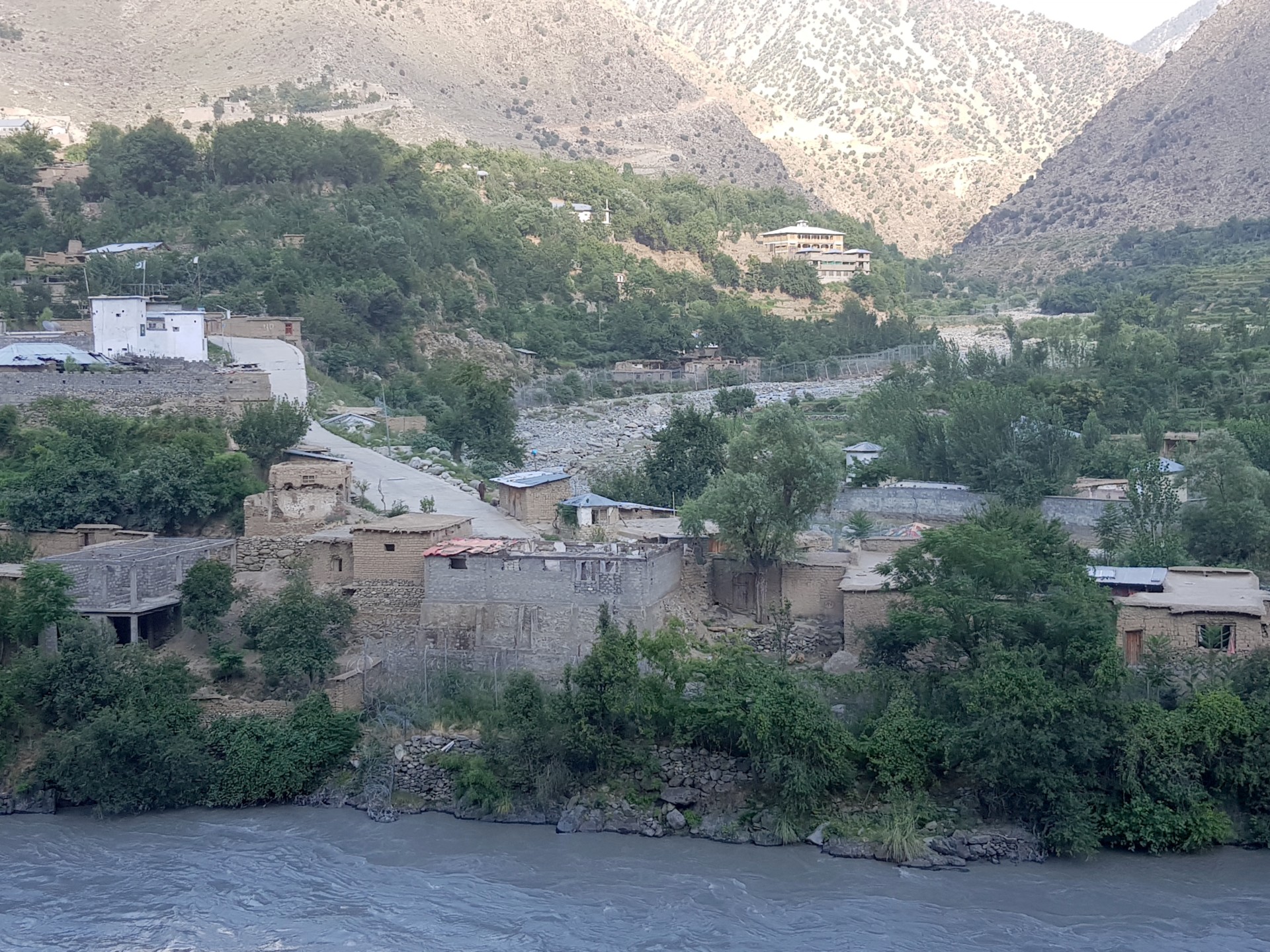Khalillullah Rahimi, father of three, lived in a village in the Sirkanay district of Afghanistan’s eastern province Kunar. At the time he was killed in a rocket attack last July, his eldest daughter Taqwa was only four. The rocket, like many before it, was launched from across the border by Pakistani forces.
“My nephew was martyred on the 25th of Saratan,” recalls Hazratullah Rahimi, referring to Afghanistan’s Solar Hijri calendar, a date which corresponds to July 15 on the Gregorian calendar. “That day was full of rockets landing in here.”
The Afghan-Pakistan border, where Hazratullah and his nephew Khalillullah lived, is often depicted as an incubator of radicalism, a training ground for children with guns who are destined to wreak havoc in Afghanistan and Pakistan. But the only training that children seem to be getting here is how to survive artillery fire.
The Sirkanay district used to be known mainly as a corridor for the Afghan and Arab mujahedeen who, in the ’80s, would pass through it from Pakistan on their way to fight the Soviet army. To this day, the buildings in the area remain largely untouched by modern architecture. Mud-brick houses still make up its villages, with each village housing less than a hundred extended families. This is typical for Pashtuns, the ethnic group that largely inhabits this region.
Living in these rugged surroundings with its remote mountain ranges did not make Khalillullah averse to progress. After graduating with a degree in computer science, he worked at the Afghan Wireless Communication Company (AWCC), a leading telecommunication service provider in Afghanistan.
With the house open to receive mourners, Khalillullah’s uncle sat in the yard outside the guest room and, with a pained expression, recalled the day his nephew was killed.
Khalillullah was home when he saw dust rise in his yard from the aftershock of a blast. He climbed onto his roof to investigate. As soon as he learned that a rocket had hit the bazaar, just 60 meters from his home, he rushed to help. But before he could reach the scene, another rocket struck, and he was killed on the spot, along with an old man named Azim Gul and a woman and her daughter.
Sirkanay is not the only place in Kunar affected by Pakistani shelling. Rockets have also hit Nari, a district that neighbors Kamdesh in the Nuristan province, a place known to Afghans for an October 2009 battle in which heavy losses were inflicted on U.S. forces, leading to their abandoning the outpost. The area has been one of the fiercest battlegrounds in the so-called war on terror.
Home to Pashtuns, but also to Kojars and the lesser known Kohistanis, Nari district is in an area now divided by a barbed wire fence and separated from Chitral, Pakistan. This region had been a battleground during the Third Anglo-Afghan War of 1919. Today, like Sirkanay, it remains mired in conflict, trapped between shells from across the border and threats from the Taliban and ISIS.

Since 1893, when the British diplomat Mortimer Durand drew a 1660-mile line demarcating the border between British India and the Emirate of Afghanistan, the Durand Line has held stories of mass migration, fierce resistance, and intermittent sorrow. Following the partition of India in 1947, the border was inherited by Pakistan and recognized by the international community. Yet it remains unrecognized by Afghanistan.
In 1976, following negotiations with the Pakistani leader Zulfiqar Ali Bhutto, the then Afghan president Sardar Muhammad Daoud Khan announced his willingness to recognize the border, but the initiative stalled after Bhutto was overthrown in a military coup. Consequently, the Durand Line has not been officially recognized by any Afghan government, including the Taliban regime.
Typical of colonial cartography, the Durand Line has disregarded local realities and arbitrarily divided communities (mainly Baloch and Pashtun). For locals on both sides of the frontier, the distinction between what is local and what is foreign has never been clear. Houses, mosques, farms and even graveyards have one entrance in Afghanistan and the other in Pakistan. People on both sides often belong to the same tribes and have resisted such artificial delimitations.
But with the U.S. invasion of Afghanistan in 2001 the situation significantly deteriorated. The Taliban and Al-Qaeda leadership retreated from Afghanistan to the Federally Administered Tribal Agencies (FATA), a region of Pakistan’s northwest frontier that had been semi-autonomous since colonial times until 2018, when it was finally merged into Pakistan’s Khyber Pakhtunkhwa province.
At first, the Pakistani Army chose to forge an agreement with local tribes, allowing them to confront Al-Qaeda themselves. But in 2004, under U.S. pressure, Pakistan began to militarize the area to prevent Taliban and foreign jihadists from using FATA as a base. But even as the U.S., Pakistan, and Afghanistan tried to enforce the border to prevent a Taliban resurgence, the tribes continued to ignore it. This created security challenges for both local and international actors.
The controversy surrounding the Afghanistan-Pakistan border and its management continued to rise, becoming a key issue in bilateral and international relations. Islamabad claims that the increased jihadist militancy in Pakistan is due to cross-border attacks launched from Afghan soil and complains about the presence of the Afghan National Army and NATO troops, accusing the latter of violating Pakistan’s sovereignty.
In 2010, Pakistani forces started shelling Kunar and the nearby province of Nangarhar with artillery, causing casualties, displacing families, and destroying the forests that generate much of the region’s income. Locals claim that such shelling affects their daily life far more than any of the militant groups active in the area.
“Even IS and Taliban are better than the Pakistanis,” says Abdul Karim Shahzada, a man in his 30s from Nari district, who is also president of a local youth organization, “at least they don’t fire heavy weapons into the bazaar and villages.”

In 2017, following an ISIS bombing and after years of security failures, Pakistan temporarily closed the border and started building a barbed-wire fence with checkpoints installed along its length. The intention was to curb militant infiltration. But while it did little to deter militants, it had a more direct impact on locals, interrupting their lives, and leaving them frustrated and angry.
“The shelling is only one of the many worries that robs us of our peace and lives,” explains Hazratullah. “Apart from some charity organization, no one comes to help, or even to pray, including the Afghan government. The martyred fathers and brothers are poor and unemployed, and their families are left to a grim future. We feel weak and desperate. We don’t believe our misery will end soon. We are still under threat, always worried when the next rocket will hit.”
In October, the Pakistani military’s heavy shelling on Kunar killed a child in Marawara district and left four other members of his family wounded. The attack drew some reactions from Afghan politicians, including former president Hamid Karzai, who has been accusing Pakistan of cross-border attacks since 2012. Pakistani officials predictably rejected these allegations, insisting that their troops only respond to attacks from militants. Locals, however, disagree.
“They [Pakistanis] were trying to establish a checkpoint in Barikot. We told them to stop. The officer said, ‘talk to your government, we have its permission.’ But we did not let them. We fought them and burned their supplies,” explains Shahzada.
Locals suspect that the current Afghan administration has made a secret deal with Pakistan in order to improve bilateral relations and gain Pakistan’s support for the Afghan peace talks. Immediately after coming to office in 2014, President Ashraf Ghani undertook a series of controversial moves, such as an intelligence-sharing deal with Pakistan and an agreement to send Afghan military cadets to Pakistan for training. (Kabul, however, retreated from many of these policies once Amrullah Saleh, the former head of Afghan intelligence, became vice president.)
Ten days after Khalillullah’s death, Hamdullah Mohib, National Security Advisor of Afghanistan, visited his family and the governor’s office in Sirkanay district to pay his respects. But locals scorned the move, viewing it as merely an attempt by Kabul to exploit the situation. Washington has pressed Islamabad to use its influence over the Taliban in the peace talks being held in Doha, Qatar. But the Afghan government resents Pakistan’s role, fearing it will only favor the Taliban. And now, locals believe that the Afghan government is less interested in helping them than in undermining Pakistan.
“When we try to fight them and prevent their fence-wall, the government stops us, and accuses us of being suborned by India,” says a Nari resident, a veteran of the anti-Soviet jihad. “Once the government border police even searched our houses to seize the barbed wires we had taken from Pakistanis and gave it back so they can continue building the fence-wall.”
To the tribes living across the border, the Pakistani fence is nothing more than a line of control breaking organic links between communities derived from common history, culture, and tradition. Despite the mounting difficulties, however, people continue to participate in weddings, funerals, and Jirgas (councils of tribal elders) on both sides of the border.
“Children transfer chickens by boat to this side for sale daily,” says Shahzada, “It is impossible to divide these people. Force may do it for some time, but once we regain our strength, we will be united again.”




